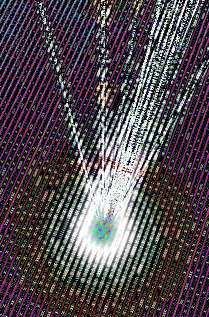Graphene wraps for tech security
 QUT engineers have developed a graphene layer to protect communication systems.
QUT engineers have developed a graphene layer to protect communication systems.
QUT has worked with the Defence department on a printable ultrathin layer of carbon that can shield sensitive electronics from electromagnetic radiation.
Developments in micro-electronic technologies have led to the design of miniaturised circuits and subsystems for high speed and high capacity communication systems.
The new generation of devices are accurate, reliable, sophisticated, have advanced functionalities and are much smaller in size, light weight, and exhibit lower power consumption.
"These electronics systems are also potentially susceptible to electromagnetic radiation, whereby circuits can be upset, reset or thermally damaged, which can lead to the failure of system functionality,” says Dr Kamal Gupta, from the Defence Science and Technology (DST) Group.
The research team is investigating a locally developed inkjet printing technology for printing a graphene film on electronic circuit boards to prevent unwanted electromagnetic radiation from interfering with communication devices.
“The flexibility of inkjet printing will allow the design of multiple patterns and the superimposition of different layers to target a wide range of frequencies,” QUT’s Professor Nunzio Motta said.
The technology developed under this collaboration will be tested further at DST labs.
This project is being funded by the Next Generation Technologies Fund (NGTF), an Australian Government initiative to promote technology development.
The project builds upon previous research of Professor Motta’s group on graphene, used to develop supercapacitors, which are devices that can store energy similarly to batteries but can be charged and discharged much quicker.
The latest findings are available in this scientific report.








 Print
Print